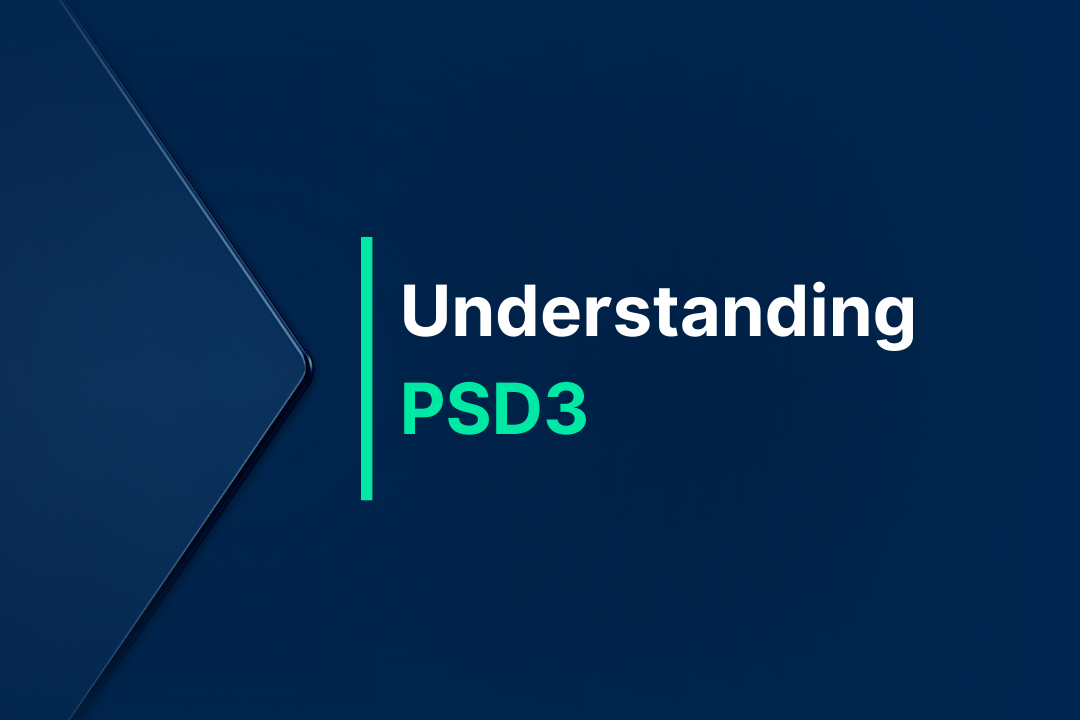Understanding PSD3: What It Is and What It Means Today
PSD3 is the EU’s next big step in modernizing digital payments. This article breaks down what it means, why it matters, and how it will shape the future of fintech and financial services.

- Remove the current class from the content27_link item as Webflows native current state will automatically be applied.
- To add interactions which automatically expand and collapse sections in the table of contents select the content27_h-trigger element, add an element trigger and select Mouse click (tap)
- For the 1st click select the custom animation Content 27 table of contents [Expand] and for the 2nd click select the custom animation Content 27 table of contents [Collapse].
- In the Trigger Settings, deselect all checkboxes other than Desktop and above. This disables the interaction on tablet and below to prevent bugs when scrolling.
Introduction
The Third Payment Services Directive (PSD3) is the latest proposed update to the European Union’s regulatory framework for payment services. Building upon the foundations established by PSD1 (2007) and PSD2 (2015), PSD3 aims to address emerging challenges and harness technological advancements to enhance security, competition, and innovation within the financial ecosystem.
What Is PSD3?
PSD3 is a new set of regulatory guidelines proposed by the European Commission aimed at modernizing payment services across the EU. It seeks to address the gaps and limitations identified under PSD2 while ensuring that the regulatory framework keeps pace with technological advancements and evolving market practices.
PSD2 successfully introduced concepts like Open Banking, enhanced security standards through Strong Customer Authentication (SCA), and facilitated greater competition by allowing new types of financial service providers to enter the market. However, various issues such as security gaps, inconsistent implementation across member states, and challenges in consumer protection remained.
Why PSD3 Is Necessary
The need for PSD3 arises from several critical factors:
- Security Concerns: The rapid evolution of digital payment methods has introduced new vulnerabilities that require more stringent and adaptive security standards.
- Fragmented Implementation: Different EU member states have implemented PSD2 rules with varying degrees of consistency, creating a fragmented market.
- Gaps in Consumer Protection: Despite improvements, certain areas related to fraud prevention, dispute resolution, and user data protection remain inadequate.
- Innovation Roadblocks: The existing framework does not adequately support new business models and technological advancements.
What’s New in PSD3?
Although PSD3 is still under discussion, some of the proposed changes and enhancements include:
- Stronger Consumer Protection: Enhanced safeguards against fraud, improved dispute resolution mechanisms, and clearer rules on liability.
- Boosting Competition & Innovation: Simplifying the regulatory landscape for new entrants and expanding the scope of Open Banking towards Open Finance.
- Improved Security & Resilience: Updating the requirements for Strong Customer Authentication (SCA) and implementing a more robust cybersecurity framework.
- Harmonization of Market Rules: Reducing inconsistencies in implementation across EU countries, thereby fostering a more unified and competitive financial market.
- Regulatory Oversight: Enhancing supervisory mechanisms to ensure consistent enforcement and compliance.
What’s Happening Today
PSD3 is currently under discussion by the European Commission and various stakeholders. Public consultations, impact assessments, and debates are ongoing, with the aim of finalizing the directive in the near future.
Many fintech companies and financial institutions are preparing for the potential changes by enhancing their cybersecurity measures, refining their data-sharing protocols, and exploring opportunities within the broader scope of Open Finance.
Potential Impact of PSD3
PSD3 is expected to:
- Provide greater protection for consumers against evolving cyber threats.
- Create a more level playing field for traditional banks and fintech companies.
- Encourage innovation and growth within the EU’s financial ecosystem by reducing barriers to entry.
- Foster a more consistent and transparent regulatory environment across member states.
PSD3 represents a critical step in the ongoing evolution of the EU’s financial services landscape. By addressing the shortcomings of PSD2 and responding to emerging technological challenges, it aims to promote innovation, enhance security, and improve consumer protection. As discussions continue, businesses and regulators alike are closely watching how these changes will shape the future of payments in the EU.
